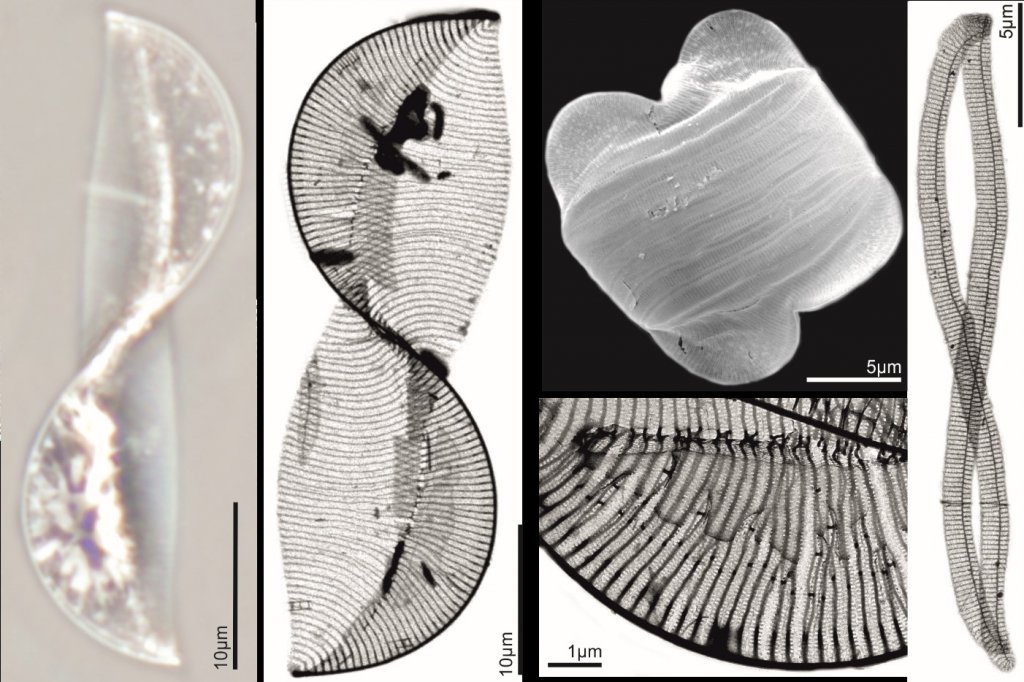Isotype of this species is deposited in the Croatian National Diatom Collection as permanent slide under accession number HRNDC000004.

The name is derived from Latin adjective “infula” (denoting a woollen fillet worn on the head by ancient Roman priests) referring to the general appearance of the cells.
Croatia: Adriatic Sea, south–eastern coast (P1000, N 42°20ʹ E 17°49ʹ). Plankton net sample collected on March 10, 2016 by S. Bosak. Holotype slide of the strain BIOTAII–68 deposited in The Friedrich Hustedt Diatom Study Centre, Bremerhaven, Germany as BRM ZU10/87. Isotype slide deposited at Macedonian diatom collection, Skopje, Macedonia under accession number 011651 MNDC. GenBank accession numbers for BIOTAII-68 are: MF000608 (18S rRNA), MF000634 (rbcL) and MF000620 (psbC).
Delicate cells with lightly silicified frustules and one plate–like plastid, usually twisted around the transapical or apical axis appearing folded, or saddle shaped: 16.8–27.8 μm long, 7.0–17.8 μm wide at constricted central part and 12.0–26.4 μm at widest part. Valves linear–lanceolate with scalpeliform apices, 16.8–27.8 μm long, 4.9–7.2 μm wide at central part. Elevated keel transitions to the valve body creating an impression of an arcuate to slightly sinusoid line. Virgae are straight, parallelly extending through whole valve body towards the valve margin, occasionally bifurcated towards the keel–body transition. Valve striae 35–50 in 10 μm. Keel striae 40–55 in 10 μm. The striae are closed by a hymen with roundish to elliptical perforations arranged in two parallel lines along the stria edges. Striae perforations 31–35 in 1 μm near the keel margin and 26–32 in 1 μm near the valve margin. Basal fibulae sometimes interconnected with adjacent ones with transverse connections forming H or Y shape, 4–5 in 1 μm. Intermediate fibulae connecting two neighbouring keel virgae or dotted thickening of the virgae scattered over the keel surface between basal and raphe fibulae, 4–6 in 1 μm. Sigmoid raphe with simple linear central and terminal endings. Raphe fibulae 38–40 in 10 μm. The cingulum is composed of one valvocopula and three to four copulae with smooth external surface, all bands are crossed. Stria density in copulae same as in valvocopulae, 50–60 in 10 μm. Valvocopulae striae occluded by very lightly silicified hymenes perforated with round to elliptical poroids, with 6–9 advalvar and 25–27 abvalvar poroids, respectively.